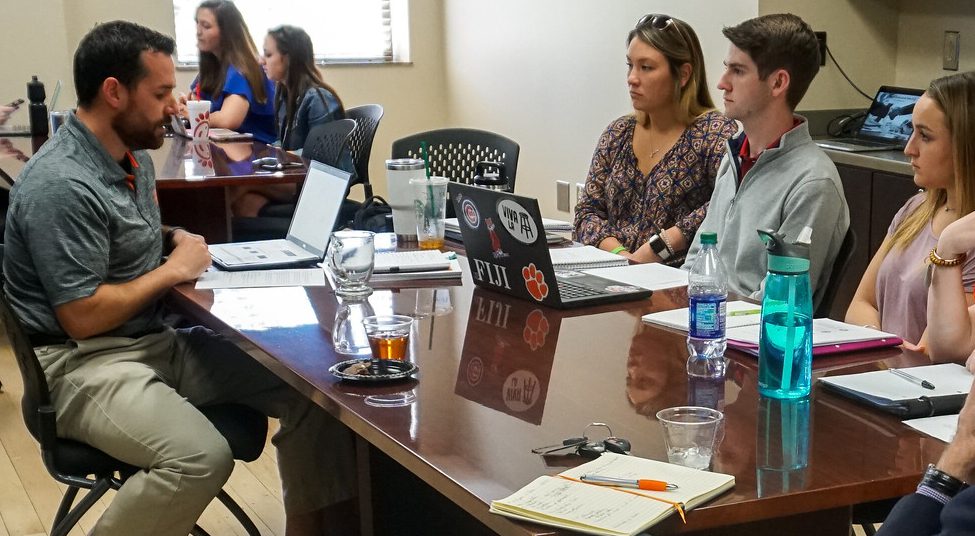When looking for relevant topics to share with his students, Kevin Chase hearkens back to his professional sales career. The research resulting from those experiences that he brings to the classroom sheds light on issues College of Business marketing students will likely encounter in their sales careers.

The assistant professor in the Department of Marketing says bringing innovation into the classroom is one of the charges of the college’s Sales Innovation Program, one of eight newly created Signature Programs that will differentiate a Clemson business education.
“Much of my research is borne out of issues I faced while in my financial services sales career,” Chase said. “By bringing new research findings into the classroom, we are fulfilling one of the Sales Innovation Program’s missions. Cutting-edge research gives our students sales insights that many of their peers don’t have.”
Chase’s most recent research project, “Selling to Barricaded Buyers,” has been published in the Journal of Marketing. It identifies several ways in which suppliers can enhance their competitiveness in the Request for Proposal (RFP) sales process.
“To ensure a fair and competitive purchase process, the RFP sales process restricts the buyer and supplier from communicating once the process has been initiated, which can hinder a supplier’s ability to communicate their value to a potential client,” Chase said. “One of the goals of the research was to identify more effective ways to navigate this complex process and get through to the ‘barricaded buyer.’ ‘’
The study by Chase and fellow researcher Brian Murtha, associate professor of marketing at the University of Kentucky, identified ways both sides of the sales process can “signal” their intentions about the transaction.
“Prior to the RFP being developed, buyers and suppliers can openly communicate. One example would be a supplier becoming aware of a pending RFP who will provide language from a previous document that the buyer might use along with their own information,” Chase said.
Another opportunity for suppliers to send signals is after the RFP “hits the streets,” Chase said. It’s when all the suppliers as a group meet face-to-face with the buyer.
“In these meetings, suppliers often make bold attempts to communicate their value to the buyer. It’s called peacocking,” Chase said. “They essentially ‘show off’ in front of their competitors. They might tout their strength of the relationship with the buyer, or their connections to individuals within the buyer’s firm. Our research showed that these tactics can substantially demotivate a competitor from responding to the buyer’s RFP.”
The Sales Innovation Program is one of eight Signature Programs in Dean Wendy York’s strategic plan that will leverage the strengths of the College of Business’ traditional majors. The resulting core competencies, she said, will lead to a sales program among the best in the nation.
“Research is an integral component of our Sales Innovation Program,” Dean York said. “Cutting-edge research brings innovation into the sales process. By introducing that research in the classroom, our students are not only learning about current sales trends, but also where the industry is headed next, enhancing their career opportunities and marketability to future employees.”
# # #
Get in touch and we will connect you with the author or another expert.
Or email us at news@clemson.edu

